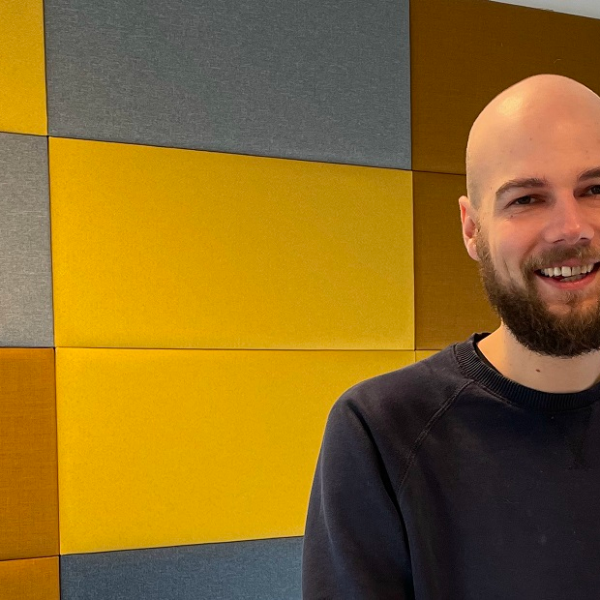Three questions for Erik Bosman

Three questions for Erik Bosman
Erik works as a Unity developer at Witteveen+Bos. He has his specialty in building visualisations, simulations and digital twins. We asked Erik three questions.
1. You work as a Unity developer at an engineering firm, what does that entail?
As a Unity developer, I work in a game environment. In it, I create visualisations, animations and simulations in 3D. For example, a new residential area you can walk through in Virtual Reality (VR), but also an application in your web browser in which you can see what an area will look like after renovation. This can be applied in different phases of a project, including the initial phase for testing and checking certain scenarios.
2. What kind of applications do you make?
For instance, we make applications for validating cameras. Then, before hanging the cameras in a tunnel, you can see per camera how they can be operated and moved. The tool allows you to make the settings in advance and check whether they are hanging in the right places. If it turns out afterwards that they are not hanging properly, it is no longer possible to move them or moving them costs a lot of time and money.
In addition to large civil objects such as tunnels, I also work on smaller projects, such as street adjustments in municipalities. For this, I developed the Infrashaper with a team. With that tool, you can easily compare the renovated streetscape and the old streetscape. Here, the visualisations mainly help to make it clearer to citizens and stakeholders what the changes will mean. The tool also shows what each option means for the materials needed.
3. What else can it help with?
The visualisations I make are also used for training. I have developed a training tool for safety camera operators. This shows the simulated tunnel on (simulated) safety cameras. During the training, the cameras are operated just like in real life. Scenarios are simulated, such as a fire in the tunnel, smoke development, maintenance work or an accident requiring traffic to be diverted onto one lane. Because the simulations seem lifelike, employees are really trained for reality, for example, during the scenarios they learn to guide people safely to the emergency exits of the tunnels. These are scenarios you don't just run in real life for training purposes. Even if there are procedures, these situations can rarely be tested in a realistic way. That's why this is a perfect solution.
More information?
Erik is a software developer who is specialised in building 3D applications used for visualisations, simulations and digital twins.
